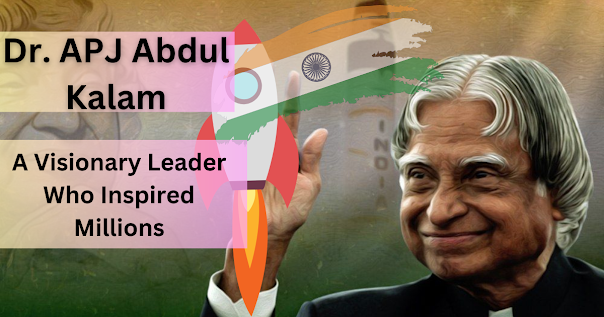Dr. APJ Abdul Kalam: A Visionary Leader Who Inspired Millions
Dr. APJ Abdul Kalam, also known as the ‘Missile Man of India‘, was an aerospace engineer, a teacher, a scientist, and the 11th President of India. He was one of the most remarkable personalities in India’s contemporary history, whose life and work continue to inspire millions around the world.
This blog will explore the life and work of Dr. APJ Abdul Kalam, his achievements, and his legacy.
Early Life and Education
Dr. APJ Abdul Kalam was born on October 15, 1931, in Rameswaram, Tamil Nadu, India. He was the youngest of four brothers and one sister. His parents were devout Muslims who owned a boat and ferried pilgrims from Rameswaram to Dhanushkodi.
Kalam attended Schwartz Higher Secondary School in Ramanathapuram and later graduated in Physics from Saint Joseph’s College, Tiruchirappalli, in 1954. He then went on to study Aerospace Engineering at the Madras Institute of Technology in Chennai and graduated in 1960.
Early Career
After completing his studies, Dr. APJ Abdul Kalam joined the Defence Research and Development Organisation (DRDO) as a scientist. He worked on various projects, including the development of the country’s first indigenous satellite launch vehicle (SLV-III).
Kalam also played a crucial role in the development of the Integrated Guided Missile Development Program (IGMDP), which included the development of Agni, Prithvi, Akash, Trishul, and Nag missile systems.
Contribution to India’s Space Program
Dr. APJ Abdul Kalam’s contribution to India’s space program is immeasurable. Under his leadership, India successfully launched Rohini, the first satellite designed and fabricated in the country, in 1983. He was also involved in the successful launch of the Polar Satellite Launch Vehicle (PSLV), which put India firmly on the global space map.
Kalam went on to serve as the Chief Scientific Adviser to the Prime Minister and the Secretary of the Defence Research and Development Organisation from 1992 to 1999. During his tenure, he oversaw the nuclear tests at Pokhran in 1998, which demonstrated India’s capability to develop and test nuclear weapons.
Presidency and Legacy
In 2002, Dr. APJ Abdul Kalam was elected as the President of India, becoming the first scientist to hold the post. During his tenure, he focused on empowering youth and mobilizing them to work towards building a better India. He launched several initiatives such as the ‘PURA‘ (Providing Urban Amenities in Rural Areas) scheme, which aimed to provide essential amenities to rural areas and create sustainable livelihoods.
Kalam was known for his humility, simplicity, and dedication to serving the people of India. He was a great teacher and inspired millions of students to pursue careers in science and technology. He also authored several books, including ‘Wings of Fire‘ and ‘Ignited Minds‘, which continue to inspire young minds.
Dr. APJ Abdul Kalam passed away on July 27, 2015, while delivering a lecture at the Indian Institute of Management Shillong. His demise was a great loss for the nation, but his legacy lives on. He remains an inspiration and role model for millions of Indians, especially the youth, who seek to make a positive impact on society.
Conclusion
Dr. APJ Abdul Kalam was a visionary leader, a great scientist, and a teacher who dedicated his life to serving the people of India. His contributions to India’s space program and the development of missile technology are unparalleled. He was a humble and simple man who inspired millions around the world through his life and work.
Kalam’s legacy lives on, and his vision for a better India continues to inspire the youth to work toward building a progressive and sustainable nation.



.png)
Comments
Post a Comment